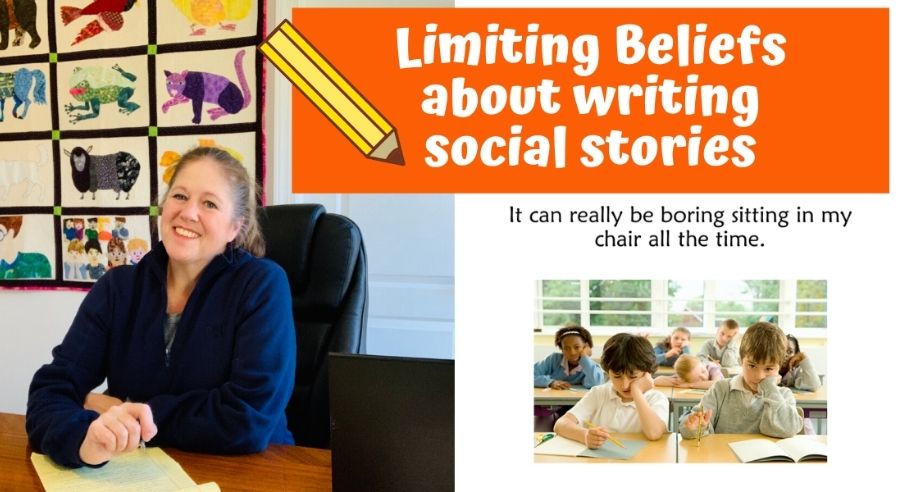In the world of special education, social stories are a tool we use A LOT. And, if you don’t use them, then you still likely know exactly what they are. Many teachers are confused about the best practices when it comes to this particular behavior tool, and we will talk about those best practices next week. But, for now I want to talk about some of the most common limiting beliefs or misconceptions I hear from teachers when it comes to writing and using social stories in their classroom or at home.
1. Social stories are quick and easy to write
I do agree with part of this statement, social stories can be quick and easy to write, but that is only true if you put some work in upfront. In order to write a social story that is going to be effective, we must first spend some time understanding the behavior we will be writing about.
This is actually the first, and most critical step in my 8 part framework for writing an effective social story. Correctly determining the function of the behavior will determine if your social story has any chance of working. This is not always easy, and it often requires bringing in some extra people to help you observe and figure it out. If you get this step wrong, then even the best crafted social story will fall flat. But, if you get this step right, then your social story will be quick and easy to write.
2. Social stories are a quick fix to any behavior problem.
Just like with any behavior tool, social stories take time to have an impact. You have to commit to using them on a consistent basis in a consistent manner. But, even then, behaviors are slow to change. You have to accept that the first attempt is not always the last attempt. You will have to evaluate, tweak, and try again. However, as with any research based method, there is a lot of evidence that it will allow you to make the positive impact you are hoping for.
3. A good social story is the only tool you need.
I have never seen a social story implemented in isolation. We are always pulling several levers and utilizing various tools together to increase the overall efficacy of a behavior plan. Typically, when we use a social story we are also employing other strategies like prompting, modeling and even planned ignoring. It is when we use all these tools together, that we have the greatest impact.
So, don’t think just because you now have the perfect social story that you will not need to implement other behavior tools from your toolbox. Your social story will only be made stronger and more effective when you use other strategies to support it.
4. I need to have special training or certification to write a good social story.
This limiting belief is the one I hear most often. So many teachers won’t even try to write a social story because they think there is some secret formula you have to use in order for it to even work. There are some key points you need to remember, but they are not hard and any teacher absolutely can and should write their own social story.
I have done lots of research, and have tweaked and developed my own 8 part process that I have used for over 20 years. I have written hundreds of successful social stories, without ever attending an official training. Although not officially certified, I can write a story to get my student to stop crawling under the table and stay in his chair, and you can to.
5. I don’t have time to write a social story.
Time. Time is the biggest limiting belief most of us have for so many things. One, social stories do NOT take a lot of time. As we talked about above in #1, it does take some upfront investigative work, but the actual writing of the story takes less than 30 minutes. We all can find 30 minutes.
Second, if you are thinking I will just buy one instead, then I encourage you to read some of the latest research. It is undeniable that the most effective social stories are written by the person who knows the student the best…YOU. The story is written for ONE particular student focusing on one SPECIFIC behavior. Unless you spend time tweaking the ones you buy, generic stories are not nearly as effective.
In my next blog post, I will talk about some of the most recent research and best practices when it comes to using social stories in your classroom or at home. But trust me for now, you are the best person to write the story and it will not take much time.

